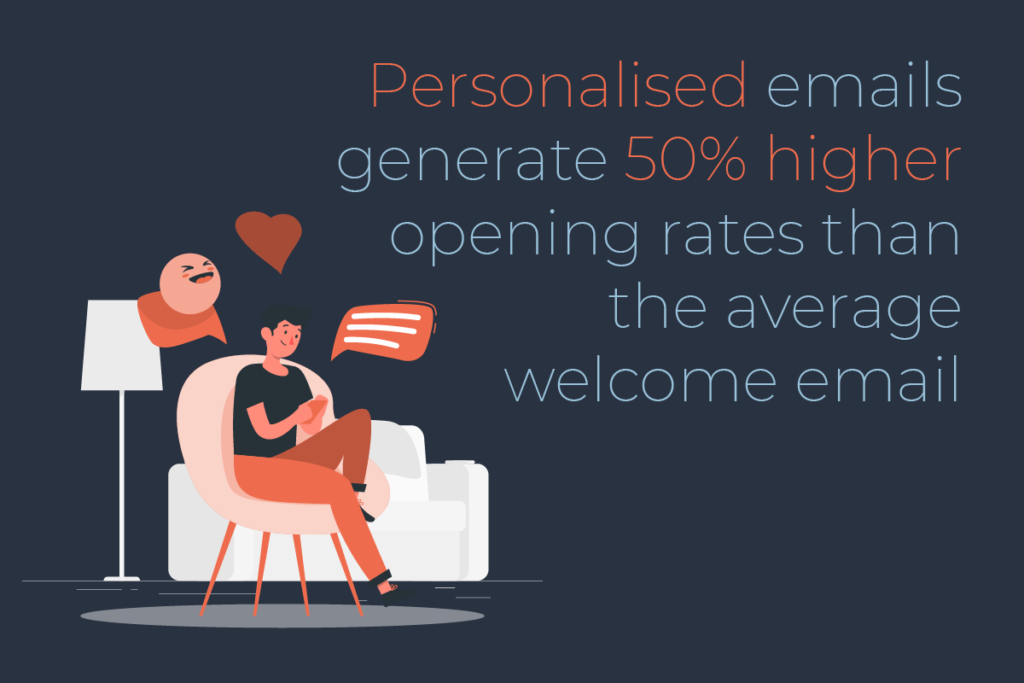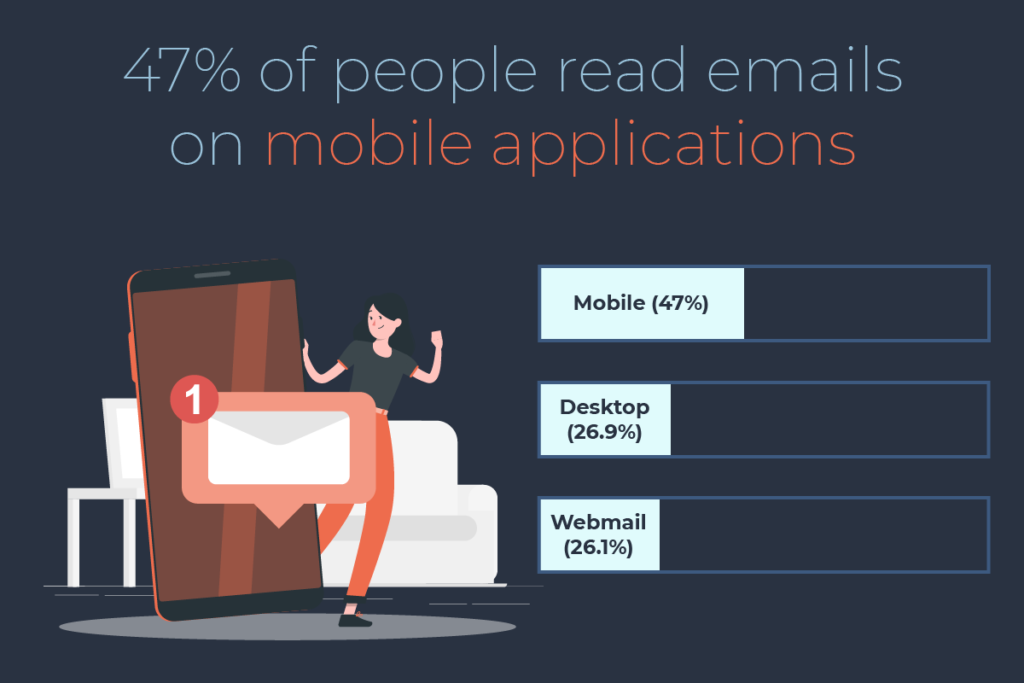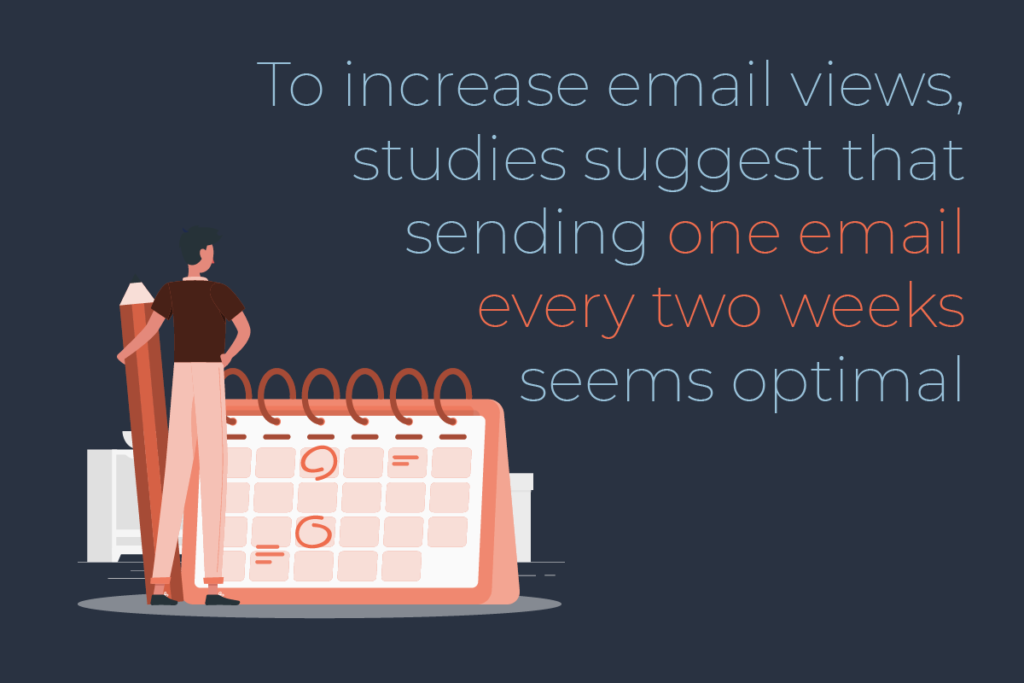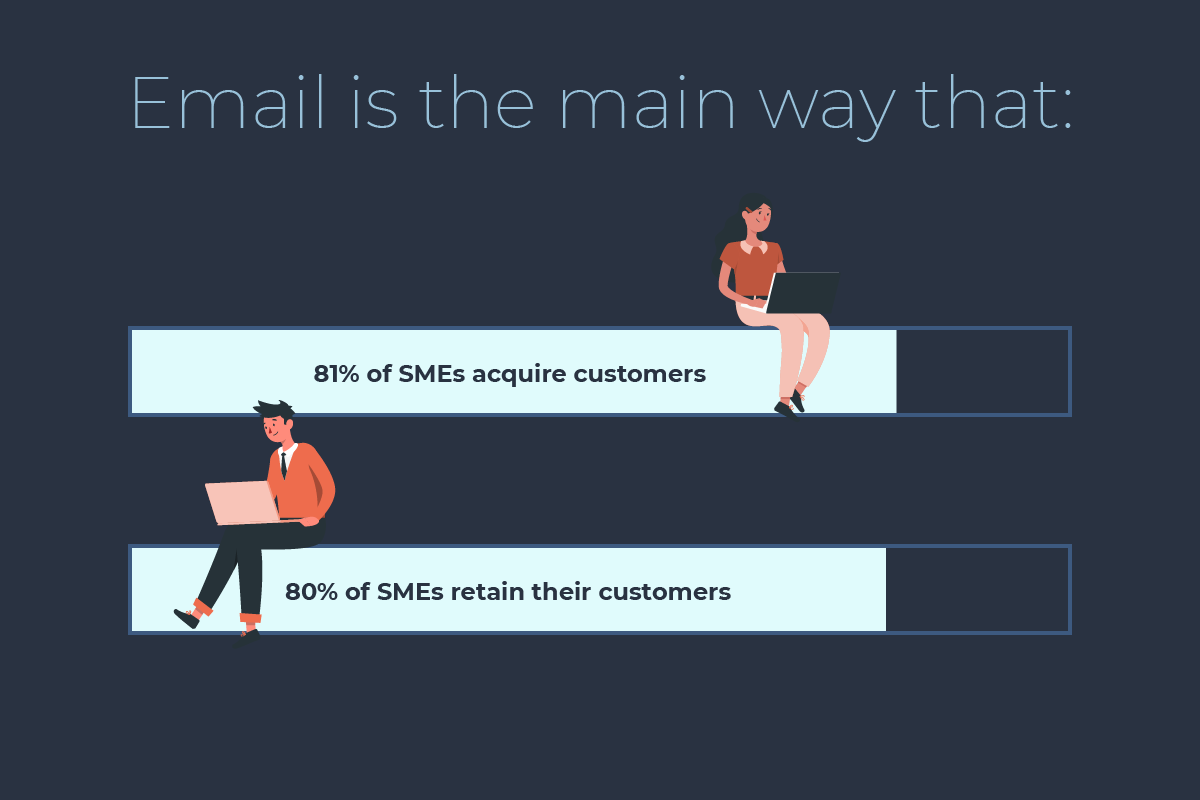

Why email marketing still matters

Even as technology evolved rapidly over the past decades, email marketing — the OG form of digital marketing — still remains a tried-and-true method of driving conversions.
It’s true — a comprehensive email marketing strategy will help drive conversions and increase your revenue. With an average of return of $42 for every dollar spent, email marketing continues to deliver a strong return on investment.
Couple that with the fact that the number of email users is set to grow to 4.3 billion globally by 2023, email marketing offers you access to a huge segment of the world’s population — unconstrained by geographical factors.
If you’re not optimising your email marketing strategy, yaou’re definitely missing out.
What is email marketing?
Before the advent of the internet, traditional marketing tactics involved sending flyers, ads and brochures to prospects and customers via snail mail. Now we have email marketing to fulfil the same purpose, except it’s all digital.
Effective EDMs convert prospects into customers, and turn one-time buyers into loyal fans who will keep coming back for more. In fact, email continues to be the main way in which 81% of SMEs acquire customers and 80% of SMEs retain their customers.
Building your mailing list
First things first: building your email list. You can’t exactly run an email campaign if you have no one to send your emails to!
There are numerous ways for you to build your email list. Try putting opt-in forms on your website or post links for your social media followers to subscribe to your mailing list.
Alternatively, rather than merely asking people to “sign up”, you can try using a lead magnet instead. A lead magnet is where you offer people something in exchange for their email address, such as a whitepaper, ebook, consultation or trial.
By offering them some kind of content or service, you are giving people a more compelling reason to sign up for your mailing list because they get something meaningful in return.
Marketing funnel
Ever heard of the marketing funnel? As it turns out, you can apply the same principles to guide your email campaigns as well.
A marketing funnel is used to understand the process of turning leads into customers. It describes the exact journey your customers take from the early stages when they first find out about your business right up to the purchase decision.
Like an actual funnel, the idea is to cast a wide net to maximise the capturing of leads before pushing prospective customers down through each narrowing stage until you finally convert them into an actual buyer.
Using the marketing funnel helps you get a better idea as to what kind of email marketing you should be doing at every stage to improve your chances of conversion.
Top funnel
As recent world events have shown, email marketing is more crucial than ever for brands to ensure business continuity and to keep in touch with their consumer base.
Top funnel email marketing is all about raising awareness and drawing prospects in — it’s where lead generation takes place. You collect information about your leads, who are are pulled in for nurturing further down the funnel.
Most people that you’ll be emailing during this stage are likely to be new subscribers, and you don’t want to scare them away right at the start by trying to sell them something. That’s really the fastest way to lose a lead.
Start by sending them a welcome email instead. This email will serve as an introduction to your brand and briefly details what value you have to offer them as a result of them signing up to your mailing list. This can be regular content updates or exclusive promo codes and product previews.
The most important part? You shouldn’t ask ANYTHING of them.
Middle funnel
Mid-funnel email marketing is all about building trust and keeping your subscribers engaged. The idea is to offer them useful information that’s related to your field of expertise, which then helps you position yourself as a thought leader.
The more you nurture this relationship with them by providing quality content, the more reliable you will seem, and the more they will grow to trust you.
To give is to receive: when the time finally comes for them to make that purchasing decision, they’ll definitely think about buying from you.
Newsletters are a good example of middle funnel marketing — they provide valuable information without asking for anything in return (at least not yet!). The aim of newsletters is to inform and educate. In fact, we just blogged about what we learnt from producing our own newsletter for the past three years.
Bottom funnel
The most crucial part of your email marketing strategy comes in this bottom funnel section. Bottom funnel email marketing is centred around conversions and retention — the last step in converting your leads into actual sales, and then retaining these buyers as regulars.
Conversion
If you’re an online retailer, email marketing in this funnel is relatively straightforward. Have a new product or service launching? Put that out on your email! Shout it out to the world!
Here’s the catch: unlike the top and middle funnels, you can actually add a Call-to-Action in your bottom funnel emails. That’s the whole idea really, to prompt and give your buyers one final nudge into making that purchase.
A Call-to-Action button can be as simple and as straightforward as a “Buy now” link that takes your subscriber straight to your product landing page.
Retention
If you are looking to retain existing customers and make sure they come back for more, there are different types of emails that you can send to different audiences in your mailing list.
The key here lies in segmentation — splitting the people on your mailing list up into smaller groups with similar characteristics and targeting them accordingly.
Recent purchasers
If you’re looking at recent buyers, try sending a follow-up email that entices them to make yet another purchase by offering an incentive. This can range from anything like a discount on their next purchase, to a referral promo code, or even information about other items they might like.
Loyal customers
If you have a customer who has shown you unwavering support over and over again, perhaps it’s time for you to send them a thank you email. To demonstrate your commitment to continuous improvement and ensure killer customer satisfaction, this email can also include a feedback form so you know just how you fare.
Little things matter, and these little things help your customer feel appreciated. Who knows, the good experience they had with your brand might just lure them back into making yet another purchase.
Dormant buyers and cart abandoners
For dormant buyers, don’t just ignore or forget about them. In fact, it’s time to do the complete opposite — drop them an email and let them know that they are missed!
Try including information about the latest updates and new products that they might like based on their previous purchase, as well. You’ll never know what might pique their curiosity and send them right back to your site to make another purchase.
Named after the phenomenon where people cart items and not complete their purchase, abandon cart emails are another email marketing weapon for all retailers out there. It’s actually such a common occurrence: almost 7 in 10 people have abandoned shopping carts.
That’s a pretty large segment of the population that you’ll be missing if you just let them go. Why not send them a reminder about their items? It might just be the final prod they need to complete their purchase.
Best practices for email marketing
Importance of personalisation

Do you remember the last time you received a generic promotional email in your inbox? Did you feel like junking it into the spam box right away? This might change the moment you see that it’s actually addressed to you. You might even pause and skim right through it instead. That’s the power names hold.
Likewise for your subscribers list, personalisation can make a world of difference. By directly addressing your subscriber by name, they’ll feel much more personally engaged by your email. Try customising your greetings and subject lines to include each individual name — your email will definitely stand out in a flooded inbox, which makes it much more likely to be opened.
Use graphics, headers and diagrams
We always say this, and that’s because it’s true: visuals matter. They help to draw the reader in and keep them engaged. But moderation is key — emails that go ham with images and visuals look sketchy and spammy.
Include relevant visuals only where they add value. If you want to make things easily understandable, you can include diagrams and break up text with simple headers. All these features go a long way in enhancing the readability of your emails.
Mobile optimisation

With 47% of people preferring to read their emails on mobile today, making sure your emails are mobile-optimised is crucial. We’ve actually written a blog on how to best tailor your copy to suit mobile users.
No one wants to read and manoeuvre through a badly formatted email meant for desktop on their tiny phone screens. The small fonts and inappropriately sized images are also an eyesore that will definitely affect your open rates — people might even unsubscribe because it looks like you’re sending them junk.
Frequency of emails

Please do not, under any circumstances, bombard your subscribers with messages all day — they’re intrusive, they’re annoying and they make people want to unsubscribe right away.
Try sticking to a clear schedule instead, especially if you are sending out regular updates or newsletters. Once you have this timeline worked out, you can also start planning your email content calendar. This will save you from possibly sending out repetitive information to your mailing list.
One email every two weeks seems optimal for increasing email views, but there is no one-size fits-all. Every brand is different, every brand’s audience is also different. Rely on data analytics from your email campaigns to gain better insights regarding your consumer base and tweak your email campaigns accordingly.
There’s a reason why email marketing remains one of the most popular forms of driving conversions: it’s meaningful, it’s quick and it reaches your consumers right where they visit every day — their inbox.
Want to increase your conversion rates by improving your email marketing strategy? Let us help you. Reach out to our CEO Simon Kearney at [email protected]
Read more from Click2View:
- Read about what we learnt from producing our own newsletter.
- Here’s how to write a successful blog post.
- Succeed at LinkedIn marketing with these best practices.
Sign up to our newsletter for a weekly update on the latest content marketing news. Don’t forget to subscribe to our YouTube channel too!
Click2View is Southeast Asia’s premiere full-service independent B2B content marketing agency servicing clients like Microsoft, Google, Visa, Prudential, and the Lee Kuan Yew School of Public Policy.










